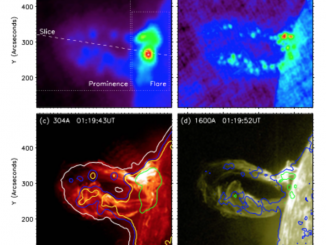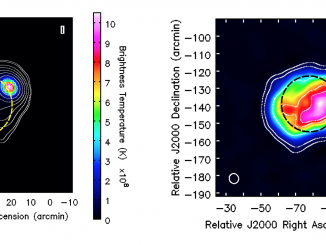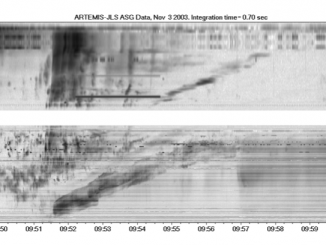Localized Microwave and EUV Bright Structures in an Eruptive Prominence
by J. Huang et al.*
We study a solar eruptive prominence with flare/coronal mass ejection (CME) event by microwave and extreme ultraviolet (EUV) observations. Its evolution can be divided into three phases: slow rise, fast expansion, and ejection. In the slow-rise phase, the prominence continuously twists for more than one hour with a patch of bright emission appearing around the top. When the north leg interacts with the local small-size loops, the fast expansion is […]



